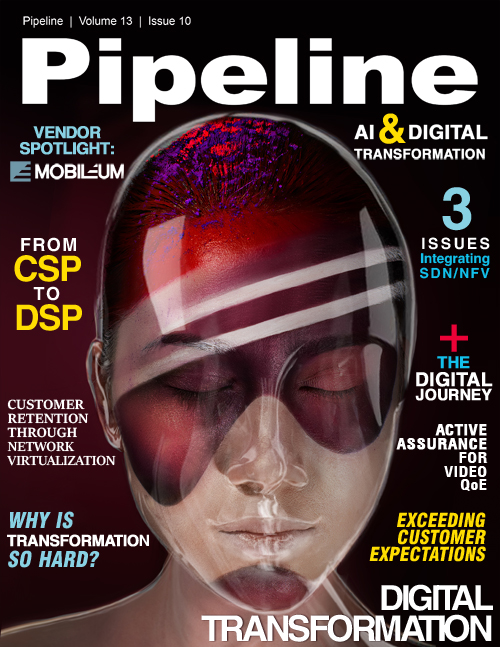The Digital Journey Comprises Customers, Services
By: Cody Bowman

Picture this: Two roads diverge in a wood. One signpost reads, “Customers.” The other reads, “Service.” Unlike the sorry traveler in that Robert Frost poem, telcos must find a way to travel both.
The journey to digital transformation is fraught with peril and metaphors, but practically speaking, it comes down to those two factors: customers and service. Telcos must change the way they interact with and serve customers, while also developing and delivering new types of digital services, in ways that are both convenient to the consumer and economical to the operator.
Why? Because the market demands it.
For a slice of the impact of digital transformation, just look at how drastically the mobile market has shifted in the U.S. in just the past several months. Market leader Verizon made a huge splash in mid-February, announcing the return of its unlimited data pricing plans. Verizon’s plan took direct shots at the rising “Un-carrier” T-Mobile, highlighting a 10-MB hotspot allowance and access to HD video, features T-Mobile did not previously offer as part of its own unlimited data plan. But, not to be undone, T-Mobile countered one day later by plugging those feature gaps.
By the end of the month, AT&T had announced an update to its unlimited wireless plan, which now includes a $25 bill credit toward its DIRECTV video service bundle. By early March, Sprint began testing an over-the-top content bundle of its own in two U.S. cities, partnering with Dish Network to offer unlimited wireless subscribers free access to the streaming platform Sling TV.
Unlimited data. Streaming content deals. Price incentives. These are all the moves of mobile operators looking to appeal to savvy consumers in a rapidly competitive mobile market. It’s just one market (albeit a big one), but it reflects the real-world impact of the trend we’ve all been hearing about for years: digital transformation. Customers are hungry for mobile data. Streaming content is king. Existing sales models won’t work any longer. Digital transformation will involve changing everything an operator does – from sales and marketing to service delivery and the network – to support these new realities.
We’re now starting to see big industry players react and transform. But, there’s still plenty of innovation to be made at every level of the industry in every country, from Tier 1s in mature markets to disruptive operators in emerging corners of the globe.
It starts by choosing a path. To transform, operators must change both how and what they serve customers. In other words, digital transformation requires customers to embark on both a digital customer journey and a digital service journey. Here’s what you need to know about both.
The Digital Customer Journey
This journey involves modifying everything that must change to meet customer expectations for engagement and service.
First, it’s important to understand those expectations. Mobile has always been a personal medium and consumers’ attachment to their devices has created a strong desire to have individual control over their personal digital ecosystem. Each mobile customer loads up their phone or tablet with exactly the apps they want or need, and ideally, they’d love to have more of a say over how they purchase and pay for those services. This isn’t just a B2C phenomenon – enterprises also crave personalized digital services.
The role for operators is not to dictate to their customers, but rather to support them. Telcos should engage customers with the tools and services to self-create their personal digital ecosystem, but right now the word “personal” is missing from many telco strategies. A recent survey of more than 2,000 mobile subscribers in the U.S. and U.K. revealed that 52 percent feel they are treated as just another nameless subscriber by their carriers.
Changing this perception involves applying the right technology. Data analytics is one obvious tool for smarter, more personal engagement, but artificial intelligence takes the benefits of big data a step further. With AI, operators can discover the types of services and experiences that matter most to their customers. They can then automatically serve more of these opportunities – in the form of revenue-driving upsells or experience-enhancing notifications – at their peak point of interest to ensure the best likelihood of response.



















